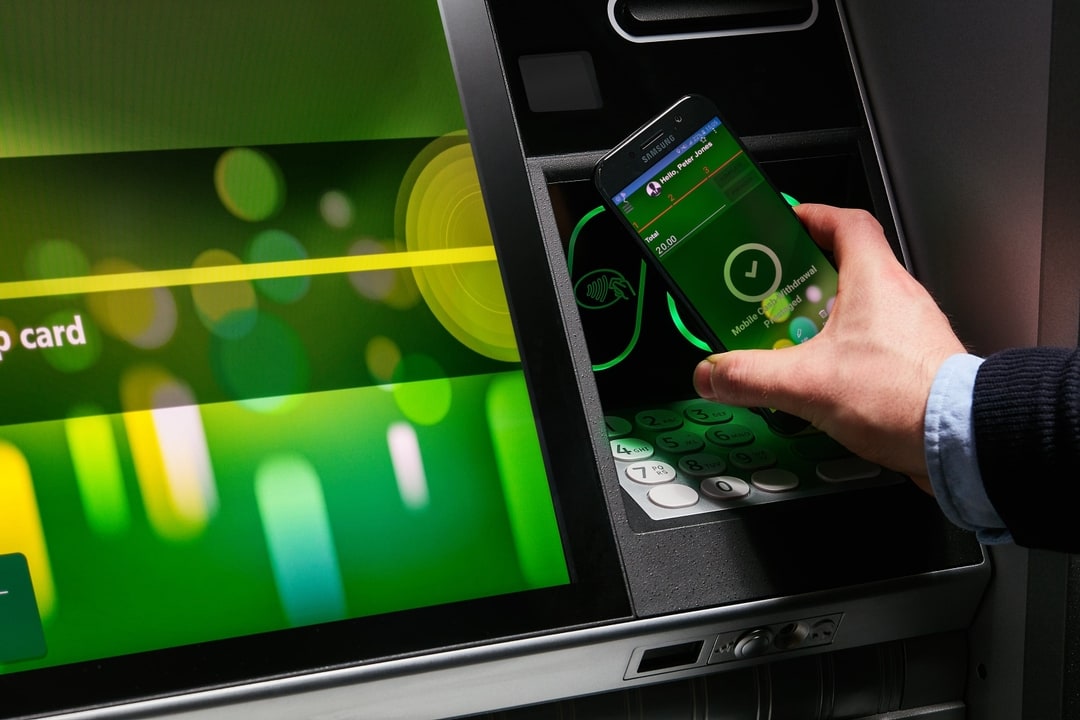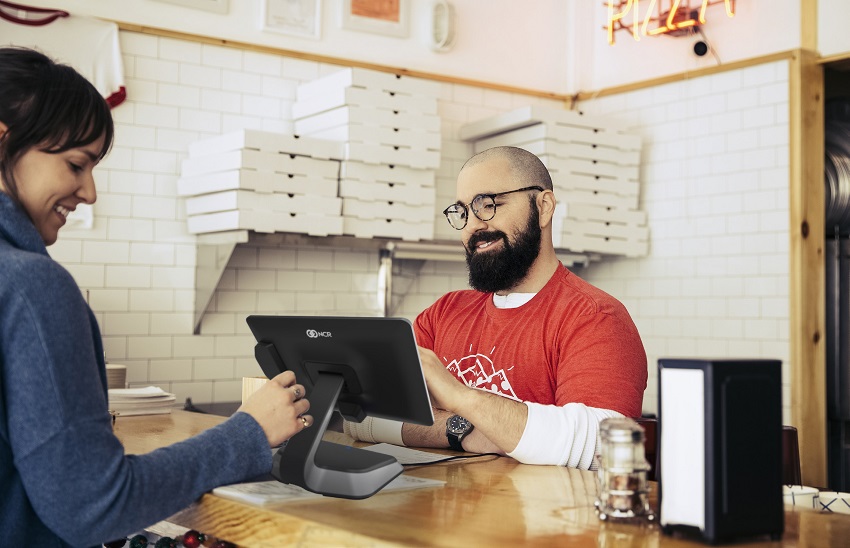The new Freedom-Model for Retail empowers your hosts and delivers better customer experience
Published July 27, 2021
When your customers can checkout how they want to, you win
The most important aspect of a good shopping experience happens at checkout—when it’s fast and friction-free. A recent VoCoVo survey of shoppers found that 33 percent of respondents said they’d leave a queue within five minutes and a third of them said that they want their entire in-store shopping experience to be a total of 10 minutes. How can retailers ensure that shoppers have a good experience every single time they visit? A new empowered and liberated service model that helps deliver exceptional shopper experience consistently every single time may be just what you need.
Challenges with the old checkout service model
Retailers must constantly optimize labor schedules to find the perfect balance of having enough hosts to serve shoppers, but not too many. But that balance can be hard to find and often the result is an under-staffed front-end where customers are faced with closed lanes and long queues at checkout.
To solve this issue, retailers deploy self-checkouts to create more open lanes for shoppers. But when they do, they may not consider that hosts will need to have new skills and tools to successfully manage this new service model. For example, during busy times of the day they’ll need to attend to all the interventions that pop-up across the self-checkout area—which can be a struggle if they’re not properly trained or don’t have the resources to handle them.
What about visibility? Can your hosts see all lanes when the area is crowded? Are there too may interventions overwhelming them? What is the average time it takes hosts to complete an intervention?
A new study from ECR Loss Group Increasing Participation and Scan Accuracy Through Design deep dives into some of the challenges that retailers need to consider while designing their self-checkout areas to drive better shopper adoption—and make it easier for hosts to deliver the experiences shoppers are looking for.
Related: 11 steps to a smarter front of store retail transformation
The new Freedom Model – A better approach
The new Freedom Model focuses on creating the right front-end design and implementing the best procedures while empowering your hosts to handle shopper issues as efficiently as possible, even without shoppers knowing that help was needed. To achieve that, retailer’s need to consider the following four elements:
1. Create an efficient front-end design that is guided by data
2. Empower hosts with tools they need to be “super hosts”
3. Ensure hosts have good training and well-defined processes to follow
4. Gain insights that help store management to course correct continuously
Let’s look at these four elements in detail.
1) Create an efficient front-end that is guided by data
To gain a good understanding of customer missions, the key pain points for both your customers and hosts and the transaction trends for your store, you’ll need data to be your guide.
Related: A retail game changer: Data driven innovation and hybrid checkout
Design the front-end for shopper profiles based on customers you see in your store. Having separate areas for different profiles reduces confusion and shopper frustration while improving customer flow. Make sure you can accept all their different payment preferences and remove clutter from all queuing areas. And the information each customer needs can vary so cover all the bases with signage and on-screen navigation tips that ensures a friction-free experience.
An efficient front-end provides hosts with an effective and efficient “playing field” that enables them to be more productive.
1) Empower hosts with tools they need to be “super hosts”
There are several ways to help hosts serve shoppers better. Here are a few to consider:
Tools that provide better visibility of transactions in each lane – Hosts can see problems as they occur and address them even before shoppers are aware of them when they’re equipped with mobile devices that provide visibility for every transaction. When they’re monitoring multiple lanes and multitasking at the same time, the ability to clear interventions without having to walk up to the shopper speeds things up and helps hosts be more responsive to shoppers.
Automation that reduces interventions – Interventions are the most annoying part of the checkout process for shoppers and for hosts it’s the biggest productivity killer. Smart tools that automatically identify the type of produce on the scale helps shoppers to quickly pick the right items and reduces intervention alerts for product/weight mismatches. Age verification can account for almost 50 percent of all interventions. Having AI based tools that allow shoppers to self-verify age digitally, with a selfie at the self-checkout or by using an age verification app, will save a considerable amount of time for shoppers and hosts.
Smart tools that tackle shrink – One of the critical parts of your hosts’ job is preventing theft. Self-checkout fraud is not uncommon as this article demonstrates. So having computer vision and AI-based tools that proactively identifies fraudulent transactions and give shoppers alerts when they need to self-correct prevents a majority of the incidents—leaving hosts to tackle a much lower number of “real” fraud cases. Even when they do occur, timely alerts and additional transaction details help hosts to be better prepared to address the situation as they approach the shopper.
2) Provide hosts with good training and well-defined processes
To start with, make sure your hosts have good training about how the self-checkout system is set up to work in your store environment. And make sure they have the technical knowledge to address customer queries such as “I can’t find this item on the list, this barcode is not scanning, the receipt did not get printed, the payment transaction is stuck.” They also need training on how to address each type of intervention and what the permissible course of actions are for each of them.
The second part of a “well-defined process” is related to the approach retailers want to take for self-checkout. In the past, many stores have had “attendants” who address self-checkout customer issues from a fixed remote terminal that shows transactions happening in self-checkout lanes. But over the last year or so we are seeing a new approach emerging—the role of a “host.”
Rather than just “attending,” hosts are more focused on engaging shoppers proactively and providing service at the self-checkout lane as opposed to being behind a fixed terminal. The hosts are focused on bringing in the human touch and ensuring each customer has the experience they’re looking for—whether it’s checking their groceries out on their own, getting assistance with replacing some produce that doesn’t look fresh, or being checked out by a host. It should all be possible as this great example form Walmart shows. Whichever approach you choose to take, the “attendants” and “hosts” need a set of clearly defined processes that they can follow to make their roles successful.
3) Insights that help store management to course correct continuously
Once you have a good design, defined processes and trained hosts in place, you’ll want to monitor how the new self-checkout area is working. And these five key performance indicators will give you a good view of how it’s all operating:
- Productivity – Get details like transactions per lane per week, percent of transactions going through self-checkout, number of cancelled transactions, etc.
- Availability – See when self-checkout is available each time per day, the hours of utilization, and if there are any downtimes, etc.
- Interventions – Determine how many intervention types you have—from age verifications to scanning issues—and then figure out how often each type occurs as well as the response times, etc.
- Tendering and cash – Gain insight into your cash transactions, usage of each type, lane loans, cash top-offs and pickups, etc.
- System health – See if your self-checkout is experiencing downtime, abnormal restarts, device errors, etc.
Armed with a dashboard that provides a view of the KPIs, retailers can fine-tune their installations, helping them to reduce downtime, optimize their store operations and improve the checkout experience.
Related: Could self-checkout be a triple threat winner?
Getting it right with the “Freedom Model”
Often self-checkout deployments overlook the new skills and tools that the store management team need to successfully manage a new service model. The Freedom-Model ensures a supporting framework that puts you on a path to success with these three elements:
- A well-designed self-checkout area that supports all customer missions, provides hosts with good visibility across the area and improves customer flow
- Empowered and knowledgeable hosts who feel invested in making sure every shopper gets the service they want, acting as a concierge that is openly communicating and highly engaged with customers
- With a ”single pane of glass” dashboard, store management will be well equipped to monitor how the store is doing and feel confident that they can course correct quickly when an issue arises and deliver on their customer satisfaction targets and service budget expectations



